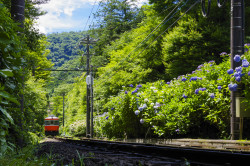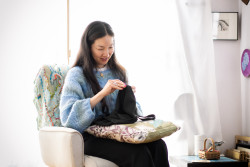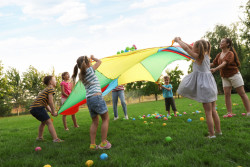
July 29, 2011
Rolling with the Gods
When visiting Shimane, be prepared for some divine inspiration
By Metropolis
Originally published on metropolis.co.jp on July 2011

After the chaos when the gods were born, only sea covered the land. The deities ordered a female and a male god to create a country. Then the chosen gods descended to the Earth they had created.
This is the beginning of the Kojiki, the oldest extant chronicle of Japan, dating from the early 8th century. It was compiled around the year 712 from myths that had been passed down orally until the era of Empress Suiko.
The Kojiki collection of myths is in three volumes and chronicles the origins of the four main islands of Japan. One-third of the first volume takes place in the Izumo region of Shimane prefecture. In 2012, from July 21 to November 11, Shimane prefecture will launch Kamigami no Kuni Shimane, a large-scale tourist campaign where Shinwa Haku Shimane, or the Myth Expo Shimane, will be held to reproduce the legend in a film for all to experience. All in commemoration of the 1,300th anniversary of the compilation of the Kojiki.
Anyone visiting Shimane at this time will not want to miss this unique opportunity to “witness” the birth of Japan.
Kagura

Amaterasu Omikami, the goddess of the sun, banished her brother Susanoo from the heavens as punishment for his behavior. Susanoo descended to the province of Izumo where he met a family terrified of Yamata no Orochi, an eight-headed and eight-tailed serpent. Yamata no Orochi had eaten seven of the family’s eight daughters one by one every year, and it was nearing the time for their last daughter, Kushinada Hime, to be devoured.
Susanoo agreed to exterminate the beast in exchange for the daughter’s hand in marriage. He prepared barrels of sake and waited for Yamata no Orochi. When it appeared, the serpent found the sake and each head drank one barrel until it fell asleep drunk. Susanoo drew his sword and chopped the serpent into small pieces.
One act in the play Kagura retells this story. In Shimane, many organizations have traditionally passed this story down to succeeding generations by acting out this legend. Come watch the brave fight of Susanoo.
Susa Shrine

The Susa Shrine is one of the many shrines that preserve the spirit of Susanoo. It is said that he thought this was “a small but a good country.” Susa is a tranquil shrine surrounded by greenery and a 1,300-year-old Japanese cedar tree.
www.shinbutsu.jp/english/49.html
Suga Shrine

It is said that the Suga Shrine is where Susanoo set up his new home to live with his wife Kushinada after defeating Yamata no Orochi. The shrine was named after the expression, “sugasugashii.” This was how Susanoo described how refreshed he was after coming there. Since songs composed by Susanoo are considered to be the first waka, or Japanese poems, the area is said to hold the origins of Japanese song. It is said that harmonious relationships, matrimonial happiness, potency, and easy childbirth can be attained here.
Hinomisaki Shrine

Hinomisaki Shrine, an important cultural property of Japan associated with Susanoo, is located on the west side of Shimane peninsula. Enjoy a beautiful stroll around this vivid vermillion shrine that is surrounded by mountains. Nearby is the Hinomisaki lighthouse, which is the tallest in Japan. The beautiful rare stones and majestic cliffs of the area make it one of the top hundred nature destinations in Japan.
www.shinbutsu.jp/english/51.html
Kuniyuzuri

Gods across the nation hold a conference concerning affinity in the tenth month of the lunar calendar at the Izumo Grand Shrine. This shrine appears in the Kuniyuzuri in one of the Kojiki volumes. Amaterasu Omikami of Heaven asked Ookuninushi of Earth to yuzuri, or “handover,” the kuni, or “nation,” after it had been created. Ookuninushi, a descendent of Susanoo, consulted with his sons and decided to grant Amaterasu Omikami her request—and handed over the nation to her. In return, she granted him a grand palace now known as the Izumo Grand Shrine.
In 2013, the Izumo Taisha Grand Shrine will have an event that only happens once every 60 years, when the resident deity, or kami, is installed into a newly rebuilt shrine. The kami is transferred into a temporary shrine whilst maintenance takes place and once the renovations are complete, the kami is returned back to the main shrine in a public ceremony.
Special Admission Day
Aug 5-21, 2011, 9am-4:30pm.
Please dress as formally as possible.

Shimane
tourism
mascot,
‘Shimanekko’







